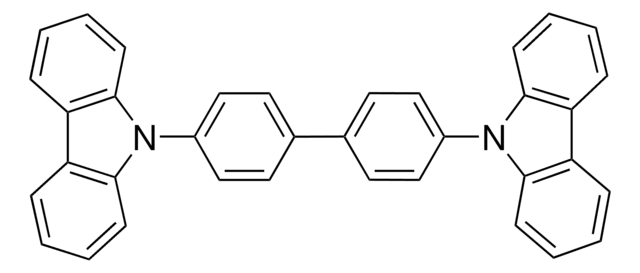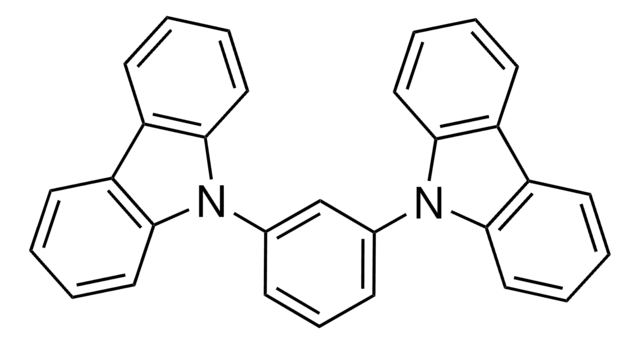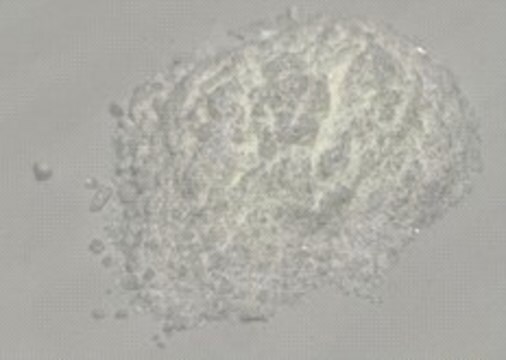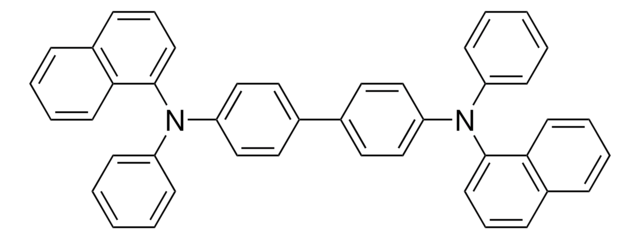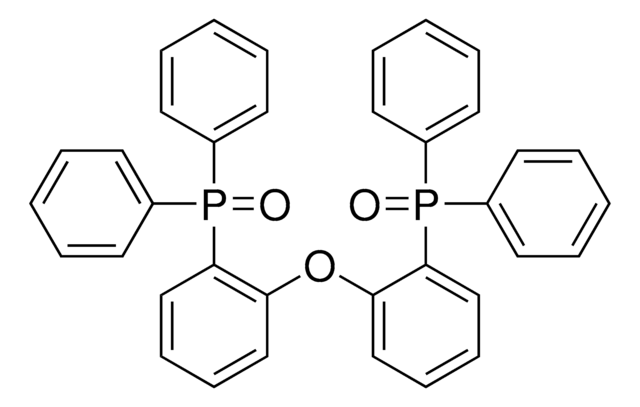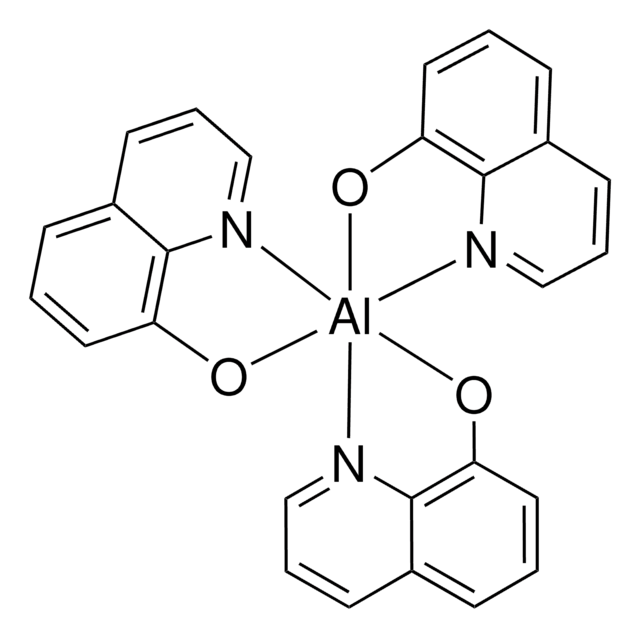806781
TPBi
Synonyme(s) :
2,2′,2"-(1,3,5-Benzinetriyl)-tris(1-phenyl-1-H-benzimidazole)
About This Item
Produits recommandés
Pureté
≥99.5% (HPLC)
Niveau de qualité
Forme
powder
Pf
272-277 °C
Énergie orbitale
HOMO 6.2 eV
LUMO 2.7 eV
Performance des dispositifs OLED
ITO/MoO3/NPB/Cz-BTPE/TPBi/LiF/Al (ref 2)
ITO/MoO3/NPB/Ph-BTPE/TPBi/LiF/Al
ITO/MoO3/NPB/isopro-BTPE/TPBi/LiF/Al(ref 2)
ITO/MoO3/NPB/methyl-BTPE/TPBi/LiF/Al (ref 2)
Chaîne SMILES
C1(C2=NC(C=CC=C3)=C3N2C4=CC=CC=C4)=CC(C5=NC(C=CC=C6)=C6N5C7=CC=CC=C7)=CC(C8=NC(C=CC=C9)=C9N8C%10=CC=CC=C%10)=C1
InChI
1S/C45H30N6/c1-4-16-34(17-5-1)49-40-25-13-10-22-37(40)46-43(49)31-28-32(44-47-38-23-11-14-26-41(38)50(44)35-18-6-2-7-19-35)30-33(29-31)45-48-39-24-12-15-27-42(39)51(45)36-20-8-3-9-21-36/h1-30H
Clé InChI
GEQBRULPNIVQPP-UHFFFAOYSA-N
Vous recherchez des produits similaires ? Visite Guide de comparaison des produits
Description générale
The increase in power conversion efficiency of the device on the addition of TBPi is attributed to the following reasons:
- Preventing exciton from quenching at the acceptor/cathode interface.
- Acting as an optical spacer.
- Forming a passivating layer.
Application
Code de la classe de stockage
11 - Combustible Solids
Classe de danger pour l'eau (WGK)
WGK 3
Point d'éclair (°F)
Not applicable
Point d'éclair (°C)
Not applicable
Faites votre choix parmi les versions les plus récentes :
Déjà en possession de ce produit ?
Retrouvez la documentation relative aux produits que vous avez récemment achetés dans la Bibliothèque de documents.
Les clients ont également consulté
Articles
Organic Light-emitting Diodes (OLEDs) are solid-state devices that transform electrical energy into light. OLEDs are considered the next generation technology for high-resolution flexible displays and solid state lighting, attracting intense scientific and industrial interest.
Advances in the area of soft optoelectronics, with a focus on the development of organic optoelectronic devices on shape memory polymers (SMP) is discussed.
Contenu apparenté
Organic electronics utilizes organic conductors and semiconductors for applications in organic photovoltaics, organic light-emitting diodes, and organic field-effect transistors.
L'électronique organique utilise des conducteurs et des semiconducteurs organiques pour les applications du type cellules photovoltaïques organiques, diodes électroluminescentes organiques (OLED) et transistors à effet de champ organiques (OFET).
Notre équipe de scientifiques dispose d'une expérience dans tous les secteurs de la recherche, notamment en sciences de la vie, science des matériaux, synthèse chimique, chromatographie, analyse et dans de nombreux autres domaines..
Contacter notre Service technique

